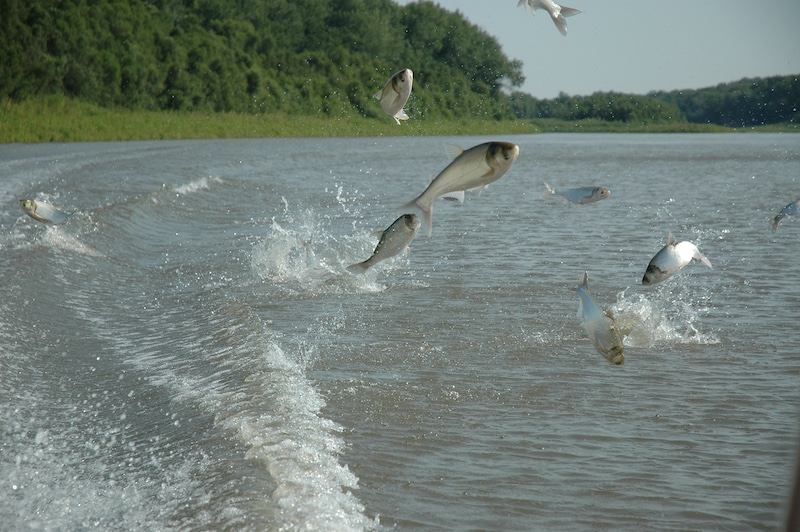
Photo by John Clayton, Credit Valley Conservation Authority.



Photo by John Clayton, Credit Valley Conservation Authority.
It is important to look back on the history of the region over the past 100 years and reflect on the evolution of the Great Lakes fishery as we know it today. The Great Lakes, and the fishery it supports, have seen many changes over the last century. Today, we are lucky to have access to such a valuable freshwater resource. The Great Lakes contain 21 percent of the world’s fresh surface water and are home to 177 species of fish, 139 of which are native.

In the early 20th century, the Great Lakes were abundant with lake trout and whitefish. Indigenous peoples and early settlers depended on these fish for their food and livelihood. With the growth of the Great Lakes fishery, the basin became a thriving hub of activity, with a booming economy and a steady flow of jobs. Communities grew, and commercial fishing became a staple. But by the mid-1930s, the Great Lakes were showing signs of serious trouble. Pollution, overfishing and the arrival of harmful invasive species caused fish populations to sharply decline.
One of the most impactful invasive species to this day is the sea lamprey. This fish is slender, like an eel, but has a powerful circular disc-shaped suction cup mouth with rows of very sharp teeth. It feeds by attaching and boring a hole in the side of a fish and consuming the blood and bodily fluids; one sea lamprey is capable of killing up to 40 pounds (18 kg) of Great Lakes fish. Native to the Atlantic Ocean, sea lampreys entered the Great Lakes through shipping canals and by 1936, had been found in Lake Michigan.
Before sea lampreys arrived in the Great Lakes, fishery management between Indigenous Tribes, eight states, and the Province of Ontario was not easy, as there was no formal cooperation or harmonization of fishery regulations. But once sea lampreys arrived on the scene, their populations exploded and they crashed the Great Lakes fishery, wreaking havoc across the region. This became the catalyst that spurred people and the leadership in the jurisdictions they lived within to finally work together.

Since sea lampreys presented a basin-wide problem, it was clear that managing sea lamprey populations would be too big of a problem for just one authority to manage. So, through the 1954 Convention on Great Lakes Fisheries—a treaty created between Canada and the United States—the Great Lakes Fishery Commission (Commission) was officially formed in 1955 and tasked with controlling sea lamprey populations, advancing science in fishery research, and helping fisheries management agencies work together.
In the 1950s, scientists discovered a chemical called TFM that kills sea lamprey larvae in rivers before they metamorphose into parasites and move into the Great Lakes. TFM has been the most successful control method for curbing populations. Combined with barriers (dams, weirs), the Commission has been able to reduce the sea lamprey population by approximately 90 percent since 1955, giving native fish populations, such as lake trout, a chance to recover, and Pacific salmonids (chinook, coho and steelhead) a chance to thrive.
Illinois, like other lake states and provinces, has communities that rely upon the Great Lakes and their tributaries for water, food and recreation. Though the state has just 63 miles (101.4 km) of Lake Michigan shoreline, myriad people, organizations, and universities play an essential role in protecting the fishery.

Illinois, and particularly the Illinois Department of Natural Resources (IDNR), works cooperatively with the Commission to protect the Great Lakes fishery through A Joint Strategic Plan for Management of Great Lakes Fisheries (JSP). This non-binding agreement, through which participants commit to cooperation, consensus, strategic planning, and ecosystem-based management, has been signed by U.S. inter-Tribal agencies, federal agencies, eight states, and the Province of Ontario. The primary bodies under which JSP agencies operate are called Lake Committees, which were first formed in 1965 to provide a forum for information sharing between agencies. Agencies appoint their representatives to the committee, and IDNR has appointed representatives to the Lake Michigan Committee since 1981, when the JSP was first signed. The Lake Michigan Committee has accomplished a lot over the years, such as implementing a predator/prey ratio analysis for Chinook salmon and alewife which guides stocking decisions and developing A Fisheries Management Implementation Strategy for the Rehabilitation of Lake Trout in Lake Michigan, and more recently A Stocking Strategy and Evaluation Objectives for the Rehabilitation of Lake Trout in Lake Michigan, which have resulted in wild lake trout populations beginning to recover, particularly in southern Lake Michigan.

The Commission collaborates with Illinois in various ways. Together they partnered with the U.S. Army Corps of Engineers (USACE) to develop the first electric dispersal barrier in the Chicago Area Waterway System; IDNR and the Commission co-chair the Monitoring and Response Workgroup (MRWG) of the Invasive Carp Regional Coordinating Committee seeking to reduce populations of invasive carp in the Illinois River; the Commission supports efforts by Illinois, Michigan and the USACE on the Brandon Road Interbasin Project, designed to prevent invasive carp populations from moving into the Great Lakes; and the Commission is partnering with IDNR and the U.S. Navy on habitat restoration in Lake Michigan.
The Commission has a long-standing record of conducting sea lamprey control, advancing fishery science research, and facilitating fisheries management. This bi-national organization is critical to the health of the Great Lakes, and without the support, commitment, and cooperation of the Illinois Department of Natural Resources and other Indigenous, local, state, provincial and federal organizations, the $5.1 billion Great Lakes fishery would cease to thrive.
Christina Contreras Stone is the communications program manager for the Great Lakes Fishery Commission in Ann Arbor, Michigan. She has a background in marine and freshwater fisheries.
Lauren Holbrook is a communications associate for the Great Lakes Fishery Commission. She is stationed at Hammond Bay Biological Station along the shore of Lake Huron, near Rogers City, Michigan.
Envíe una pregunta para el autor